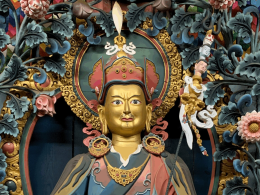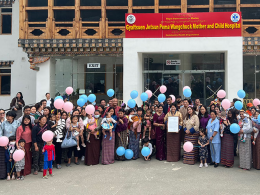In the misty river valleys of Bhutan, a rare and majestic bird quietly stalks the shallows—its slate-gray plumage blending into the forested banks, its white belly a fleeting flash in the dappled light. This is the White-bellied Heron (Ardea insignis), one of the world’s rarest birds and a sentinel of freshwater ecosystem health. With fewer than 60 individuals remaining globally, Bhutan has become a critical refuge, hosting approximately 45% of the known population.
Once found across parts of South Asia, the White-bellied Heron is now extinct in Nepal and Bangladesh and survives only in Bhutan, north-eastern India, and northern Myanmar. In Bhutan, the bird inhabits the temperate river basins of Punatsangchhu, Mangdechhu, and Wangchhu, as well as the Phibsoo Wildlife Sanctuary. Recent surveys indicate a total of 25 individuals in Bhutan, including three under care at the White-bellied Heron Conservation Centre in Tsirang.
Despite its precarious numbers, Bhutan’s commitment to the heron’s survival is unwavering. The Royal Society for Protection of Nature (RSPN), in collaboration with the Department of Forest and Park Services, has been monitoring the species since 2003, conducting annual population surveys and habitat assessments.
WBH Conservation Centre: A Beacon of Hope
Established in 2022, the White-bellied Heron Conservation Centre in Tsirang represents a pioneering effort in ex-situ conservation for this species. The center aims to create a secure gene pool through captive breeding, with the long-term goal of supplementing wild populations.

Currently housing three herons, the facility plans to expand its capacity to accommodate more individuals, ensuring genetic diversity and resilience.
The center’s dual approach combines in-situ conservation—protecting natural habitats and wild populations—with ex-situ strategies like captive breeding and research. This holistic model positions Bhutan as a global leader in the fight to save the White-bellied Heron from extinction.
Community Engagement: A Pillar of Conservation
Recognizing that conservation success hinges on local support, RSPN has actively involved communities in its efforts. In villages like Devithang in Tsirang, residents participate in monitoring heron populations and protecting nesting sites.
Livelihood initiatives, such as the introduction of high-yield crops and eco-tourism opportunities, have improved economic conditions and fostered a sense of stewardship among locals.
In Punakha, community-based tourism initiatives have integrated cultural preservation with environmental conservation, turning homestays into guardians of the heron’s habitat.
Challenges and the Way Forward
Despite these efforts, the White-bellied Heron faces numerous threats:
- Habitat loss due to hydropower development, agricultural expansion, and resource extraction.
- A small genetic pool and low reproductive rates hinder population recovery.
To address these, RSPN and its partners have developed a comprehensive 10-year action plan (2022–32) focusing on:
- Habitat protection
- Community engagement
- Scientific research
Key initiatives include:
- Restoring degraded habitats
- Mitigating human-wildlife conflicts
- Enhancing the success of captive breeding programs
The plight of the White-bellied Heron underscores the urgent need for international collaboration in conservation. Bhutan’s proactive measures serve as a model for integrating biodiversity preservation with sustainable development.
As the world grapples with accelerating species loss, the story of the White-bellied Heron offers a poignant reminder of our shared responsibility to protect the planet’s most vulnerable inhabitants.







